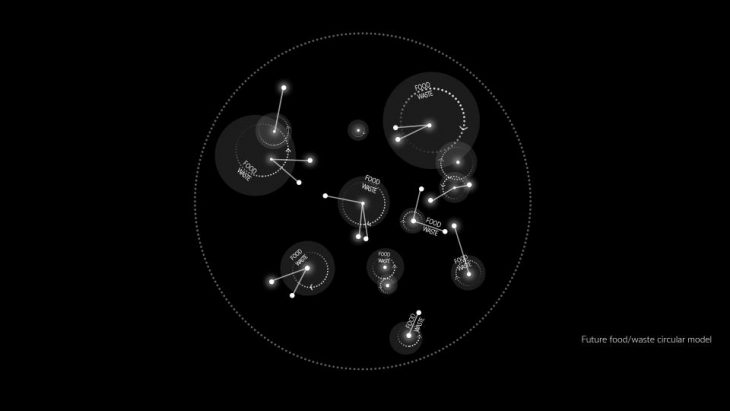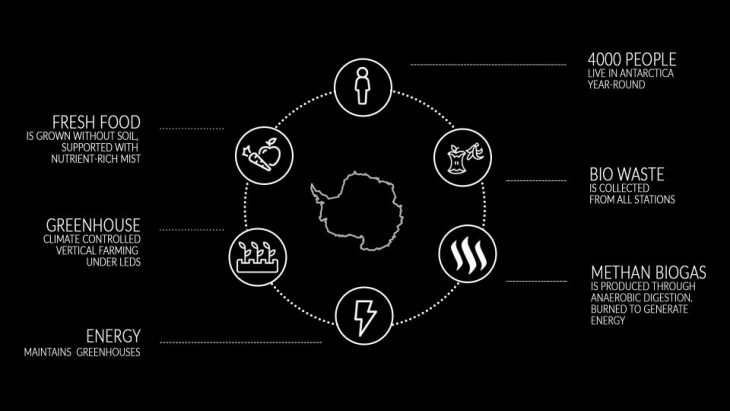The project starts with questioning if the model of the circular economy can be applied in the context of Antarctica? This curiosity leads our investigation into the logistics of food and waste management in Antarctica. Currently, one of the most unsustainable and linear systems of shipping in food and shipping out waste is being practiced.

The current linear model of distribution.

Vision for a circular model of distribution.
To reimagine and redesign this process with the theory of circular economy, we further extend our research into analyzing ways in which this change can be brought at the fundamental level. We start by exploring the potential of building Greenhouses as a step towards creating a self-sufficient food supply for the research stations in Antarctica. Alongside providing the invaluable fresh produce for the stations, greenhouses also help with the psychological well-being of the crew while dealing with the harsh and non-human environment of Antarctica. Antarctica also acts as a test-bed for technologies that can be applied for growing plants and food in similar conditions of spaceflights and other planetary bodies. To make this a self-sustaining system, it is also important to look at the waste management in Antarctica. Due to the lack of incentive, the process of generating energy from waste is disregarded at the individual level of research stations. Thereby bolstering the practice of shipping out tonnes of waste to the mainland. Not only does this increase the carbon footprint but also much of the waste ends up in landfills immediately outside of the Antarctic region. To create value out of this waste it is important to put it in a system of a larger collection from nearby stations. With this increase in the amount of collection of waste, more advanced systems of generating value from it can be applied. We start with understanding the current scenario of research stations in Antarctica. Out of the 70 research stations, merely 9 stations are either experimenting or operating greenhouses. Less than 25% of the total population in Antarctica has access to fresh produce from greenhouses. These stations can be used in the present situation to trigger the change in the system. There are 54 airfields supporting the logistic network of 70 research stations within Antarctica. These create a very efficient network that can be used to develop a strategy for the circular model.

Simply by creating a network of clusters of research stations around the present 9 operational greenhouses using the existing air-routes, the strategy can be initiated. By finding crucial nodes within the system, new greenhouses can be planned to optimize the network. Merely by adding 10 new greenhouses in stages, the vast network of 70 research stations can become self-sufficient.

Circularity at the pole is a project of IaaC, Institute for Advanced Architecture of Catalonia
developed at Master in City & Technology in (2019/2020) by:
Students: Linara Salikhova, Kushal Saraiya
Faculties: MANUEL GAUSA & NICOLA CANESSA